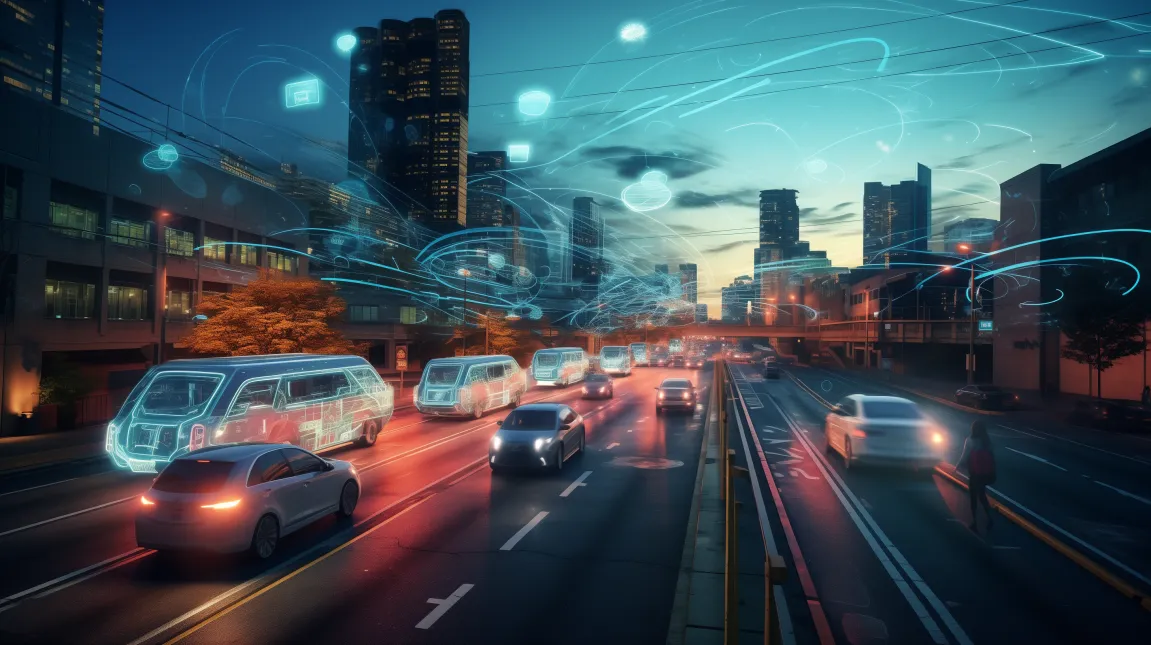Table of Contents
Seattle joined hands with Google’s Project Green Light. They want to cut the time folks wait at red lights and reduce pollution. It’s all about using smart tech to make traffic smoother and greener in Seattle. They’re using AI in Seattle Traffic to achieve this, aiming to shorten wait times and lessen harm to the environment.
AI in Seattle Traffic Eases Stoplight Wait Times
Seattle drivers might soon spend less time waiting at red lights, all thanks to new AI technology. This tech, introduced by Google, is a game-changer for traffic in Seattle, making it the pioneering city in North America to adopt such innovation. The Seattle Department of Transportation kicked off its collaboration with Google in late 2022, aiming to enhance traffic flow. This partnership is all about revolutionizing how traffic moves, potentially offering relief to drivers dealing with congestion while striving to reduce carbon emissions. With AI in Seattle traffic, smoother journeys and fewer delays could become the new norm.
Google mentioned that with this technology, you’ll spend less time waiting at red lights in Seattle, which also helps cut down on pollution. People in South Lake Union think these changes at crossings are necessary. The new AI in Seattle Traffic aims to make waiting at red lights shorter and lessen pollution. It’s a solution folks in South Lake Union believe is important to improve how traffic works and reduce harmful emissions in the city.

Revolutionizing Seattle’s Traffic Flow with Project Green Light: Google Maps and AI Lead the Way
Seattle is doing something cool with its traffic lights! They’re using a new Google thing called Project Green Light. It’s all about making traffic smoother by using Google Maps and smart AI. This is the initial project of its kind in North America. They’re studying how the traffic moves at intersections. Then, they’re going to tweak the traffic lights to make things better. It’s a big step towards improving how traffic flows in Seattle, all thanks to AI in Seattle Traffic with Project Green Light!
There are approximately 1,200 intersections in the city that have signals, and the intersections where the recommendations from Project Green Light were put into effect are:
- 15th Avenue Northwest intersects with Northwest Market Street in the neighborhood of Ballard.
- Another intersection in Ballard is formed by 15th Avenue Northwest and Northwest 53rd Street.
- In the neighborhood of Greenwood, Greenwood Avenue North intersects with North 80th Street.
Juliet Rothenberg, who heads Climate AI at Google, shared with KING 5 that Green Light, a Google Research project, is leveraging AI and Google Maps data to understand how traffic moves. They use this info to suggest better plans for traffic lights in Seattle. This initiative studies the flow of cars and offers ideas to improve how traffic lights work. It’s all about making traffic smoother and reducing pollution. Green Light analyzes patterns in how vehicles move and then suggests changes to the current traffic light setups based on that info, aiming to improve the flow of cars.
“Our AI helps city traffic by suggesting changes that work with current systems. City engineers quickly use these ideas, see how they work, and notice changes in a few weeks,” explained Rothenberg. “These changes can make traffic smoother, like getting more green lights. This makes cities, like Seattle, cleaner and better for everyone, reducing pollution caused by stopping and starting. With ‘AI in Seattle Traffic,’ we aim to make the city more eco-friendly and give people a better experience while moving around.”
Google mentioned that in Seattle’s traffic, almost half of the dirty stuff in the air at crossroads comes from speeding up after stopping. They also said that the yucky stuff in the air can be a whole lot—like 29 times—worse at crossroads compared to when you’re driving on normal roads with no intersections. This shows how important it is to use AI in Seattle Traffic to make things better by reducing this pollution and finding smarter ways for cars to move without making the air so dirty.